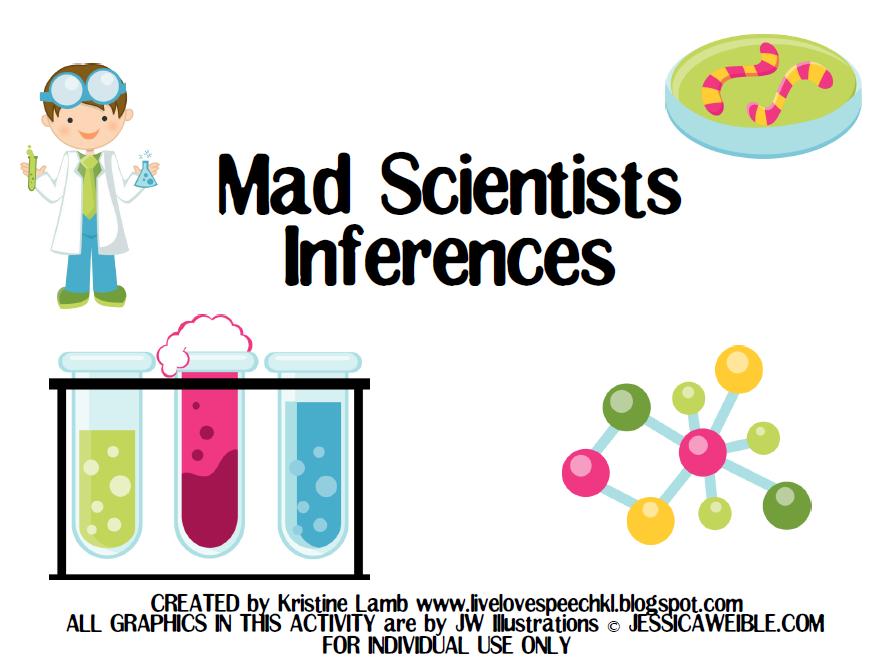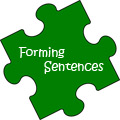
This summer I am taking an on-line course on word-finding with Dr. Diane German, and I must say, in addition to all the valuable information I have learned so far, this course has given me a brand new outlook on how to judge the language comprehension abilities of my clients with word finding difficulties. It all started with a simple task, to determine the language comprehension abilities of my client with word finding deficits. Based on available evidence I’ve collected over the period of time I’ve been working with him, I had determined that his comprehension was moderately impaired. I was then asked by Dr. German what language tasks I had used to make that determination? She also pointed out that many of the formal language comprehension tasks I’ve listed in my report required an oral response.
That question really got me thinking. The truth of the matter is that many formal tests and informal assessments that probe language comprehension abilities rely on learners oral responses. But as it had been pointed out to me, what of our clients with impaired oral skills or significant word retrieval deficits? Most of the time we judge their language comprehension based on the quality of the oral responses they produce, and if their answers are not to our satisfaction, we make sweeping judgments regarding their comprehension abilities, which as Dr. German rightfully pointed out “is the kiss of death” for learners with word finding difficulties and could potentially result in “a spiral of failure”.
Now, in the case of this particular client in question, his language comprehension abilities were truly moderately impaired. I knew that because I tested him by showing him pictures of situations and asked him questions, which did not rely on oral responses but on him selecting the correct answer from a series of pictures and written sentences.
However, had I not performed the above tasks and simply relied on the “language comprehension” subtests from popular standardized tests alone, I would not have had a defensible answer and would have had to admit that I had no clue whether his language comprehension was truly as impaired as I had described.
Following that discussion I decided to take a “fresh look” at the other expressively impaired clients on my caseload but first I needed to figure out which tasks truly assessed my clients’ language comprehension abilities. I didn’t just want to assess their listening skills and vocabulary knowledge (some of the more “easily” assessed non-verbal skills). I wanted to know whether their memory, problem solving skills, figurative language, perspective taking abilities or knowledge of multiple meaning words were actually better than I had originally judged.
Thus, I set out to compile language comprehension materials (formal or informal), which could be used to assess various aspects of language comprehension (multiple meaning words, problem solving abilities, etc) without relying on the child’s ability to produce verbal responses. However, this task turned out to be far more difficult than I had originally anticipated. For example, when I took a closer look at one of the more popular standardized tests available to me, such as the CELF-4, I realized that there were only two subtests on the first record form 5-8 years (“Concepts and Following Directions” and “Sentence Structure”) and 3 subtests on the second form 9-21 years (“Concepts & Following Directions”, “Sentence Assembly”, and “Semantic Relationships”) that relied on the listener’s ability to point to pictures or use written visuals to answer questions. Moreover, two of the subtests on the second record form (Sentence Assembly”, and “Semantic Relationships”) still required verbal responses. All other subtests testing “listening comprehension abilities” relied purely on oral responses for correct score determination.
As I reviewed other popular tests (TOLD, CASL, OWLS, etc) I quickly realized that few of these tests’ subtests actually satisfied the above requirement. Moreover, tests that actually did considerably rely on nonverbal responses (e.g., pointing) such as the Test for Auditory Comprehension of Language-3 (TACL-3) or the Test of Language Competence- Expanded Ed (TLC-Expanded Ed), were unfortunately not accessible to me at my place of work (although I did manage briefly to borrow both tests to assess some clients).
So, I decided to adapt some of the existing tests as well as create a few of my own materials to target language comprehension abilities in various areas. Surprisingly, it wasn’t as difficult as I imagined it to be, though some tasks did require more creativity than others.
The easiest of course were the assessment of receptive vocabulary for nouns, verbs, and adjectives which was accomplished via standardized testing and story comprehension for which I created picture answers for the younger children and written multiple choice responses for the older children. Assessment of synonyms and antonyms was also doable. I again printed out the relevant pictures and then presented them students. For example, to assess synonym knowledge the student was shown a relevant picture and asked to match it with another similar meaning word: “show me another word for “trail” (requires the student to point to a picture depicting “path”) or “show me another word for “flame” (requires the student to point to a picture depicting “fire”). For recognition of antonyms, the student was presented with pictures of both synonyms and antonyms and told: “show me the opposite of child” or “show me the opposite of happy” and so on.
To assess the student’s understanding of “Multiple Meanings” I borrowed the sentences from the Language Processing Test-3 Elementary (LPT-3E), and printed out a few pictures from the internet. So instead of asking the student to explain what “Rose” means in the following sentences: “Ask Rose to call me”, or “The sun rose over the mountains”, I asked the student to select and point to a corresponding picture from a group of visually related multiple meaning items. For some children, I also increased the complexity by presenting to them pictures which required attention to details in order to answer the question correctly (e.g., differentiating between boy and girl for the first picture or between actual sunrise and sun peeking through the clouds for the second picture). Similarly, to assess their problem solving abilities I again printed out pictures to go with select verbal reasoning questions: “Point to what you would do if …”; “Point to how you would solve the following situation…?”
I do have to admit that one of the more challenging subtests to adapt was the “Recalling Sentences” task. For that I ended up creating similar sounding sentences and asked the child to select the appropriate response given visual multiple choice answers (e.g., point to which sentence did I just say? “The tractor was followed by the bus?” “The bus was followed by the tractor?” “The tractor was followed by the bicycle.”
Again, the point of this exercise was not to prove that the learners’ comprehension skills were indeed impaired but rather to assess whether their comprehension was as significantly impaired as was originally judged. Well the truth of the matter was that most of the children I’ve reassessed using the “pure” auditory comprehension tasks ended up doing much better on these tasks than on those which required verbal responses.
To illustrate, here is a recent case example. I was working with one student on strengthening his knowledge of geography related core vocabulary words (names of the continents and the major bodies of water surrounding them). This boy had profound difficulty recalling the words even with maximal phonemic cues, after multiple sessions of drill instruction. Typically after he was shown a specific continent and asked to name it he produced a semantically related response (“South America” for “North America”, “Arctic” for “Antarctica”, etc), which appeared to indicate that his “knowledge” of the words was impaired or at least highly inconsistent. However, when the verbal naming task was completely eliminated and he was asked to show the examiner specifically named continents and bodies of water on a map (e.g., “Show me Europe”; “Show me Atlantic Ocean”, etc) he was able to do so with 90% accuracy over 3 trials indicating that he did have fairly solid knowledge of where each continent was located visually on a map.
Consequently, as Dr. German has rightly pointed out, when making judgment calls regarding language comprehension abilities of complex clients with severe or at least fairly involved expressive language difficulties, it is very important that SLP’s use tasks that require non verbal responses to questions (e.g., pointing, selecting a picture out of a group, etc), in order not to underestimate these children’s “true” comprehension abilities.
References and Resources:
German, D. J. (2009, Feb. 10). Child Word Finding: Student Voices Enlighten Us. The ASHA Leader, 14 (2), 10-13.
German, D.J. (2005) Word-Finding Intervention Program, Second Edition (WFIP-2) Austin Texas: Pro.Ed
German, D.J. (2001) It’s on the Tip of My Tongue, Word Finding Strategies to Remember Names and Words You Often Forget. Word Finding Materials, Inc.
Dr. German’s Word Finding Website: http://www.wordfinding.com/
 For the purpose of this particular task, I like to use photos depicting complex social communication scenarios. Then I simply ask the student: “Please describe what is happening in this photo.” Wait a second you may say: “That’s it? This is way too simple! You can’t possibly determine if someone has social communication deficits based on a single photo description!”
For the purpose of this particular task, I like to use photos depicting complex social communication scenarios. Then I simply ask the student: “Please describe what is happening in this photo.” Wait a second you may say: “That’s it? This is way too simple! You can’t possibly determine if someone has social communication deficits based on a single photo description!”



 It’s DAY 24th of my Birthday Month Giveaways and I am raffling off a giveaway by Kristine of
It’s DAY 24th of my Birthday Month Giveaways and I am raffling off a giveaway by Kristine of 
 Last week I wrote a blog post entitled: “
Last week I wrote a blog post entitled: “ Punctuation brings written words to life. As we have seen from countless of grammar memes, an error in punctuation results in conveying a completely different meaning.
Punctuation brings written words to life. As we have seen from countless of grammar memes, an error in punctuation results in conveying a completely different meaning. This explicit instruction of punctuation terminology does significantly improve my students understanding of sentence formation. Even my students with mild to moderate intellectual disabilities significantly benefit from understanding how to use periods, commas and question marks in sentences.
This explicit instruction of punctuation terminology does significantly improve my students understanding of sentence formation. Even my students with mild to moderate intellectual disabilities significantly benefit from understanding how to use periods, commas and question marks in sentences. This in turns becomes a critical thinking and an executive functions activity. Students need sift through quite a bit of information to find a website which provides the clearest answers regarding the usage of specific punctuation marks. Here, it’s important for students to locate kid friendly websites which will provide them with simple but accurate descriptions of punctuation marks usage. One example of such website is
This in turns becomes a critical thinking and an executive functions activity. Students need sift through quite a bit of information to find a website which provides the clearest answers regarding the usage of specific punctuation marks. Here, it’s important for students to locate kid friendly websites which will provide them with simple but accurate descriptions of punctuation marks usage. One example of such website is 
